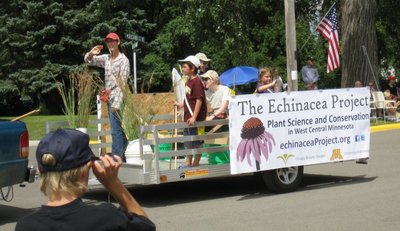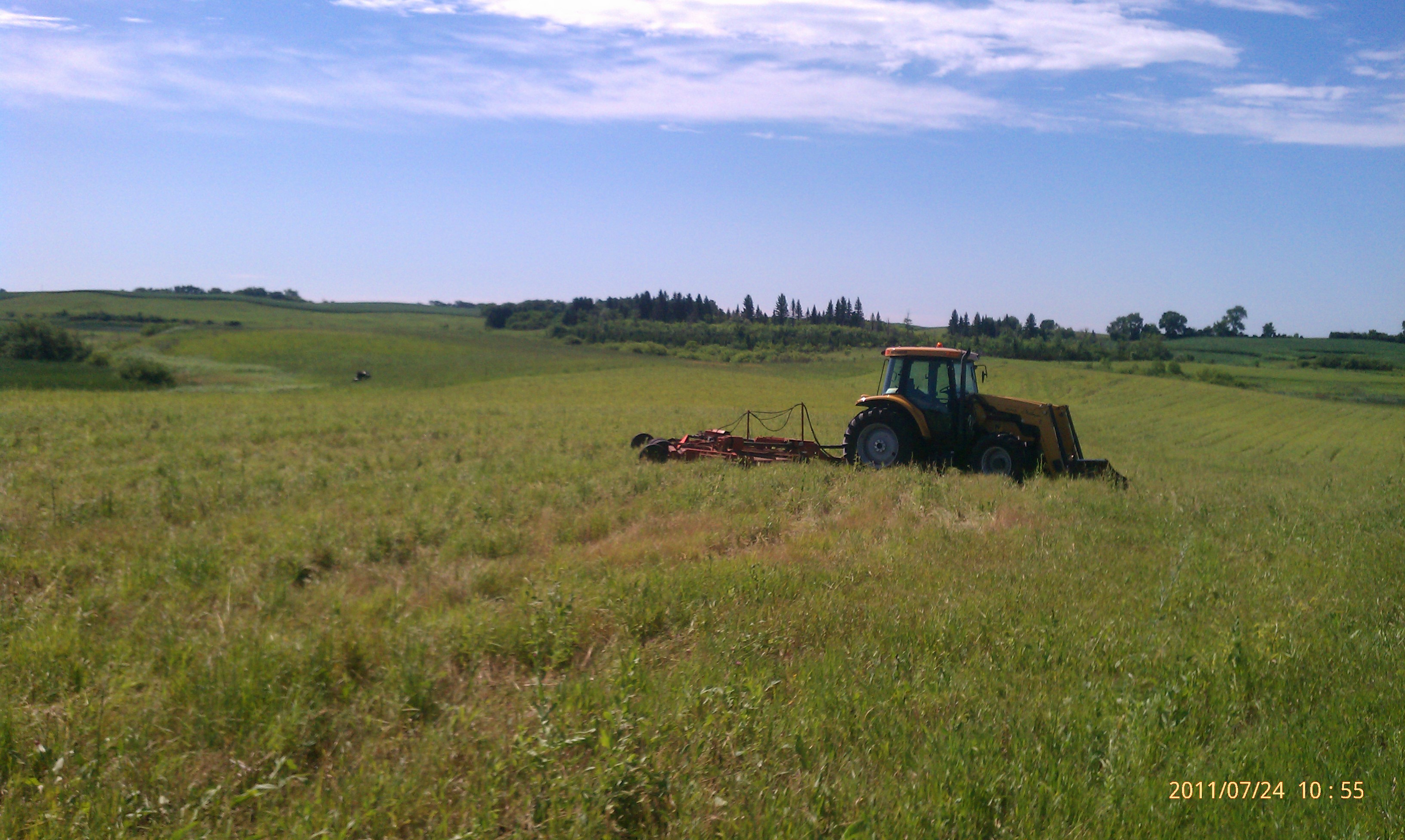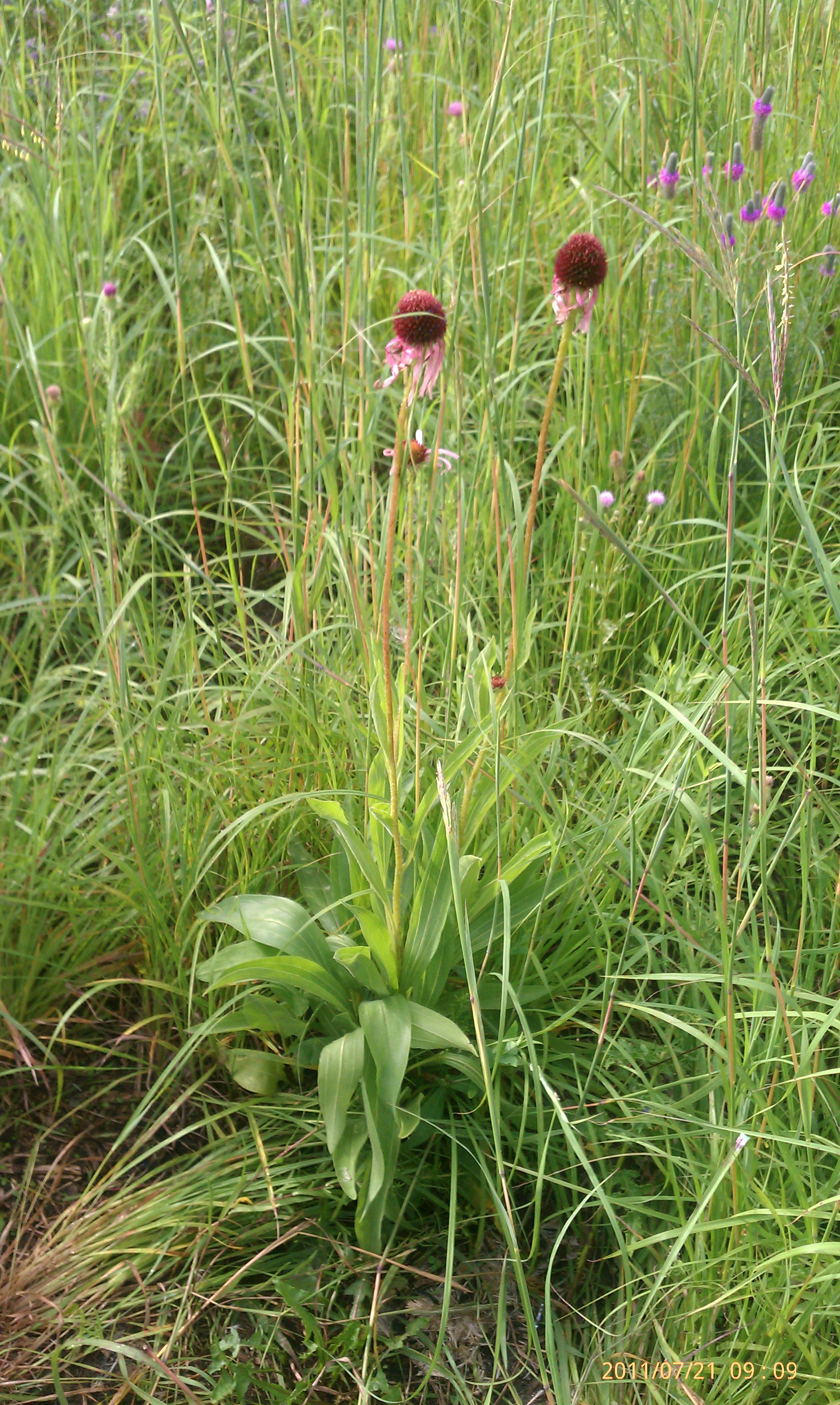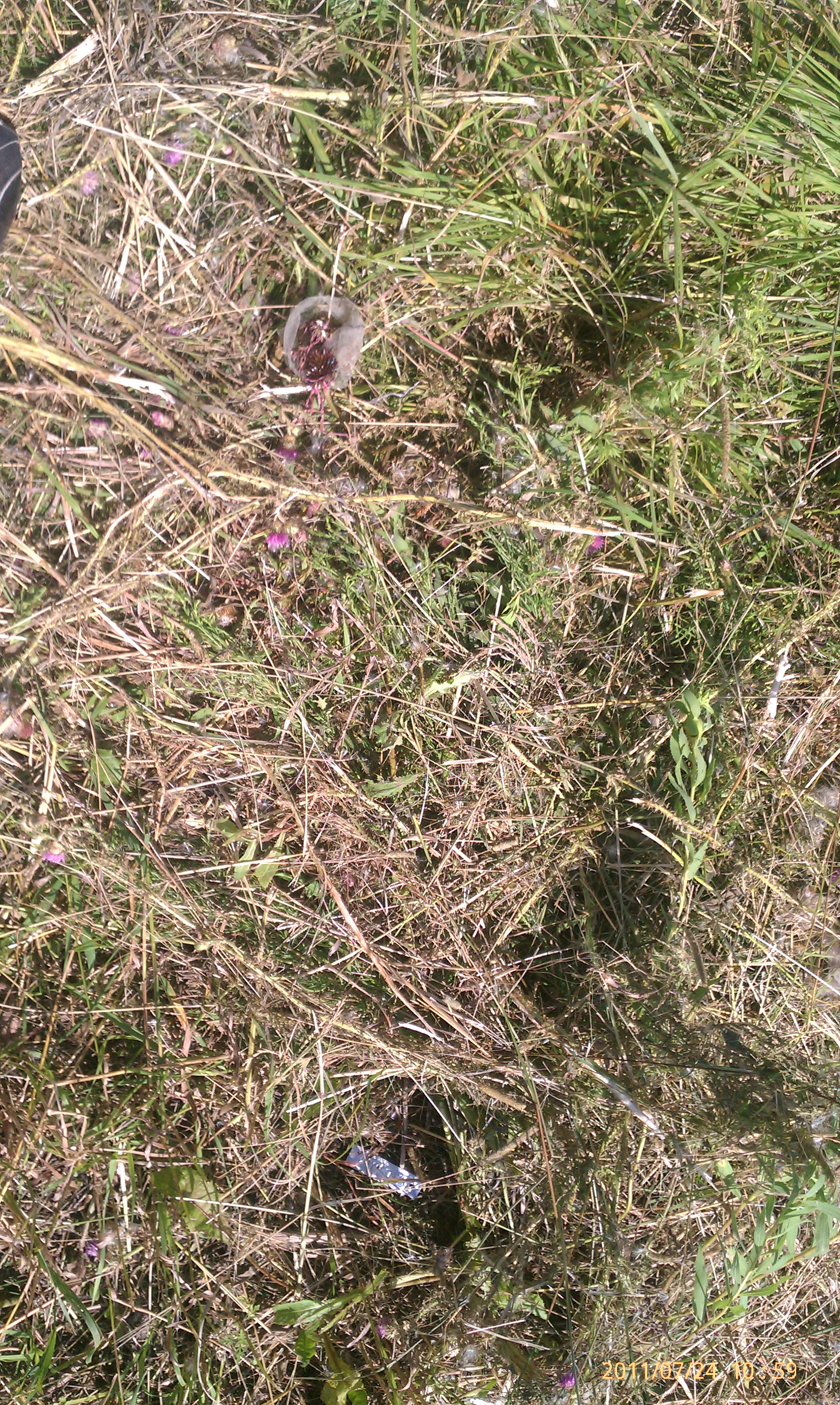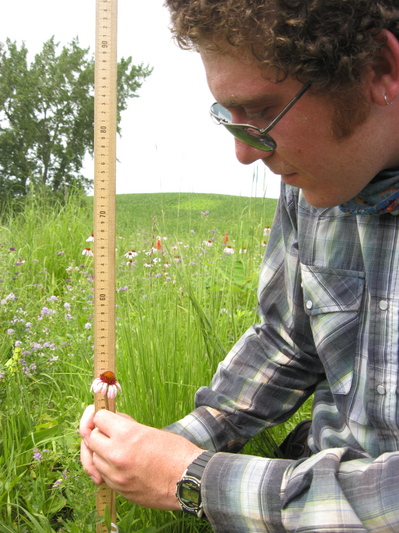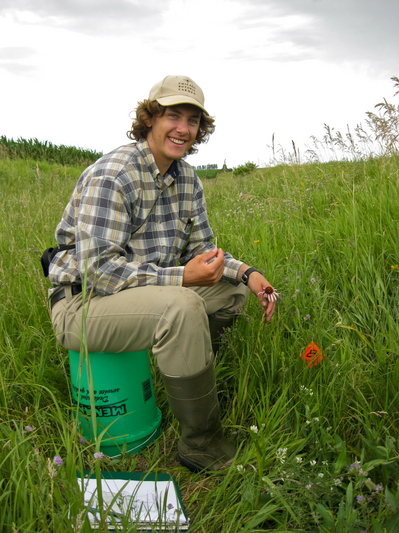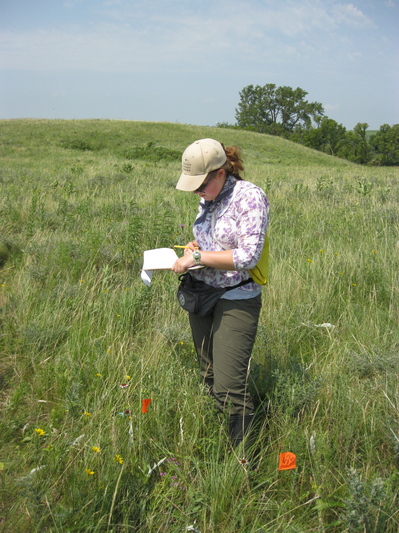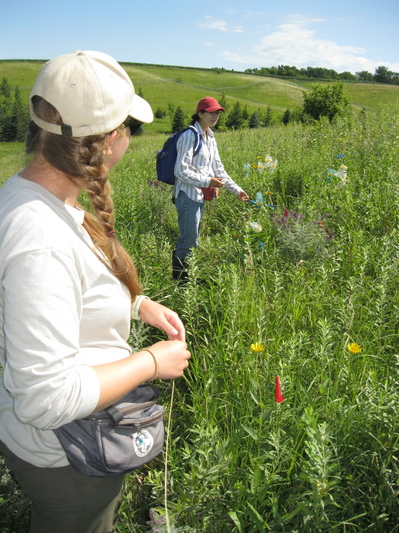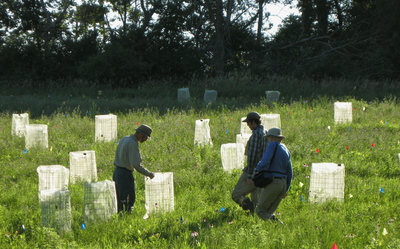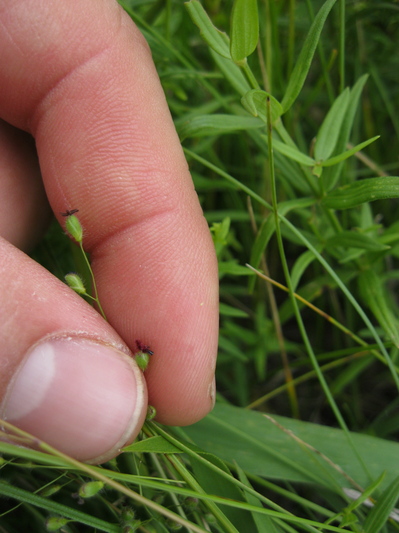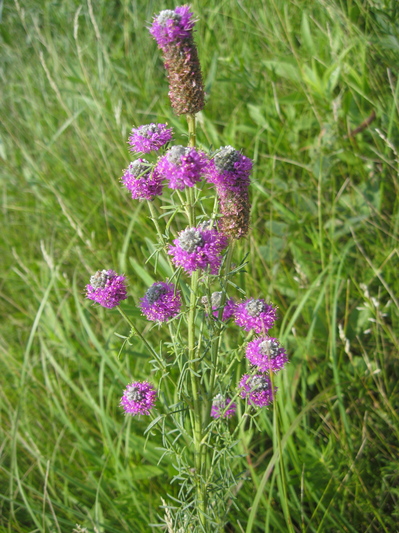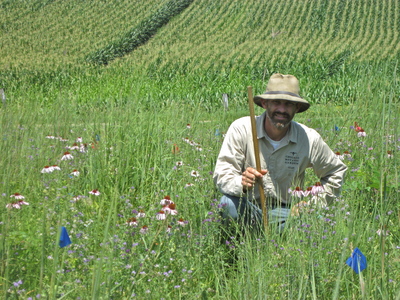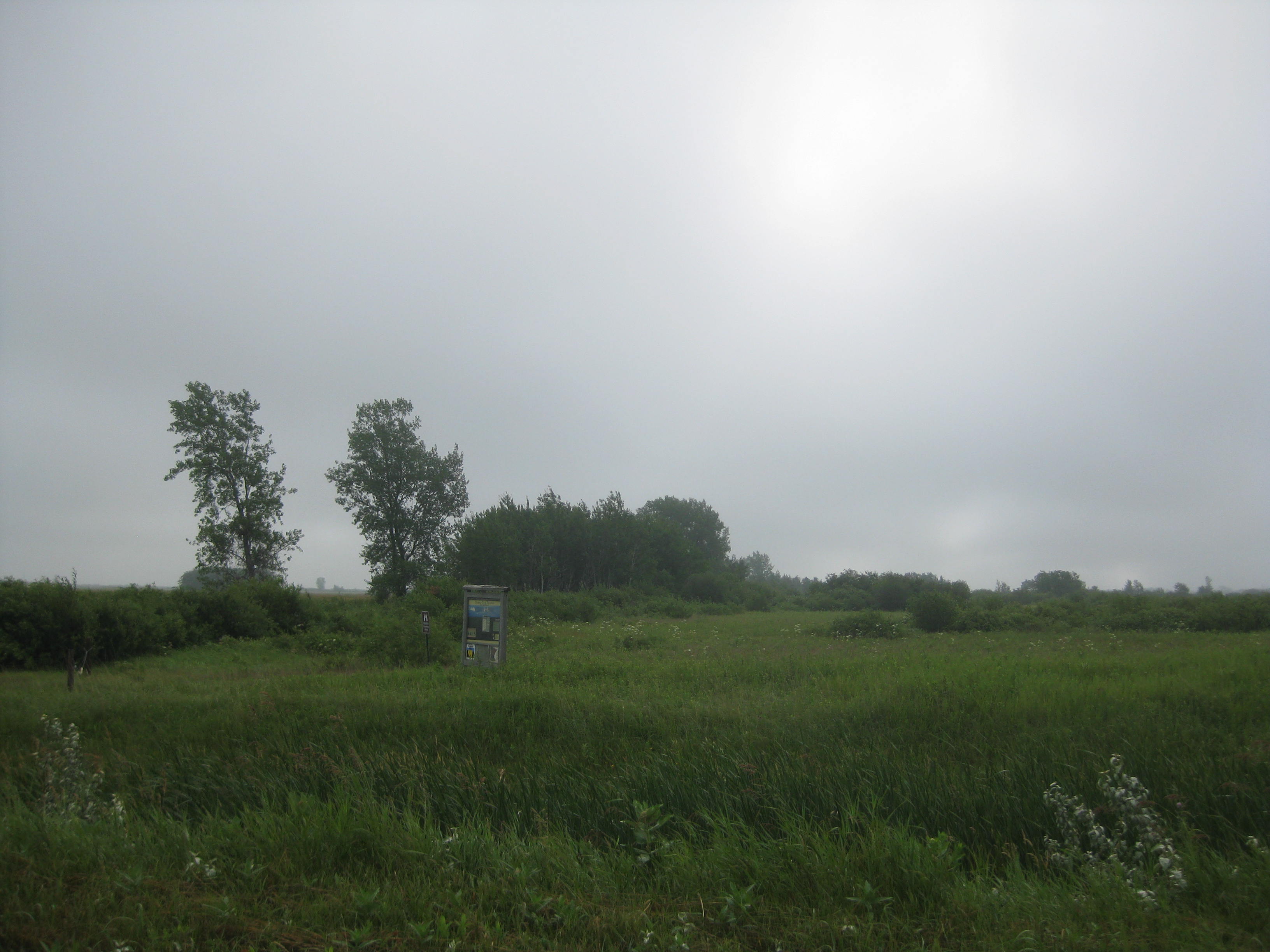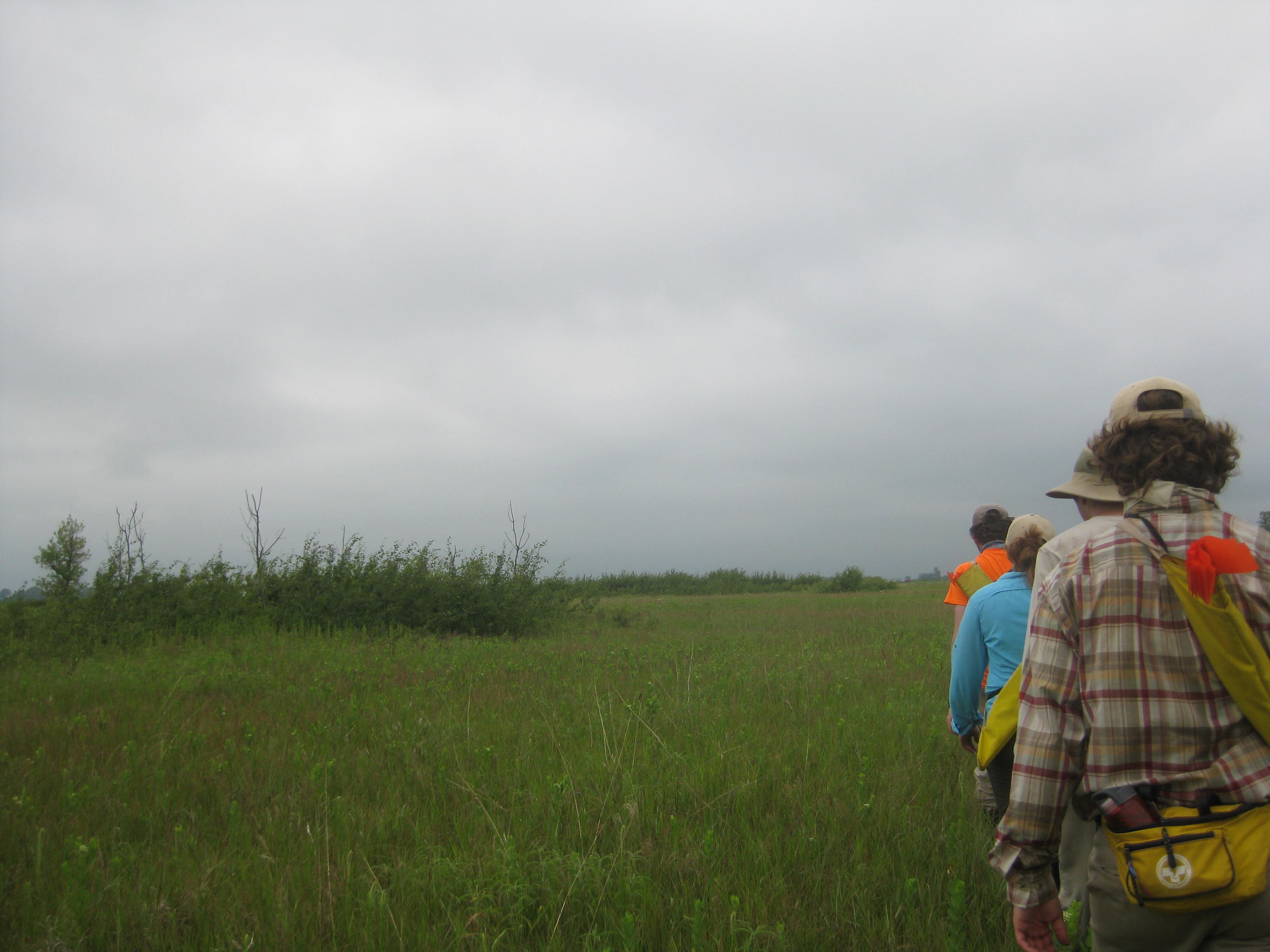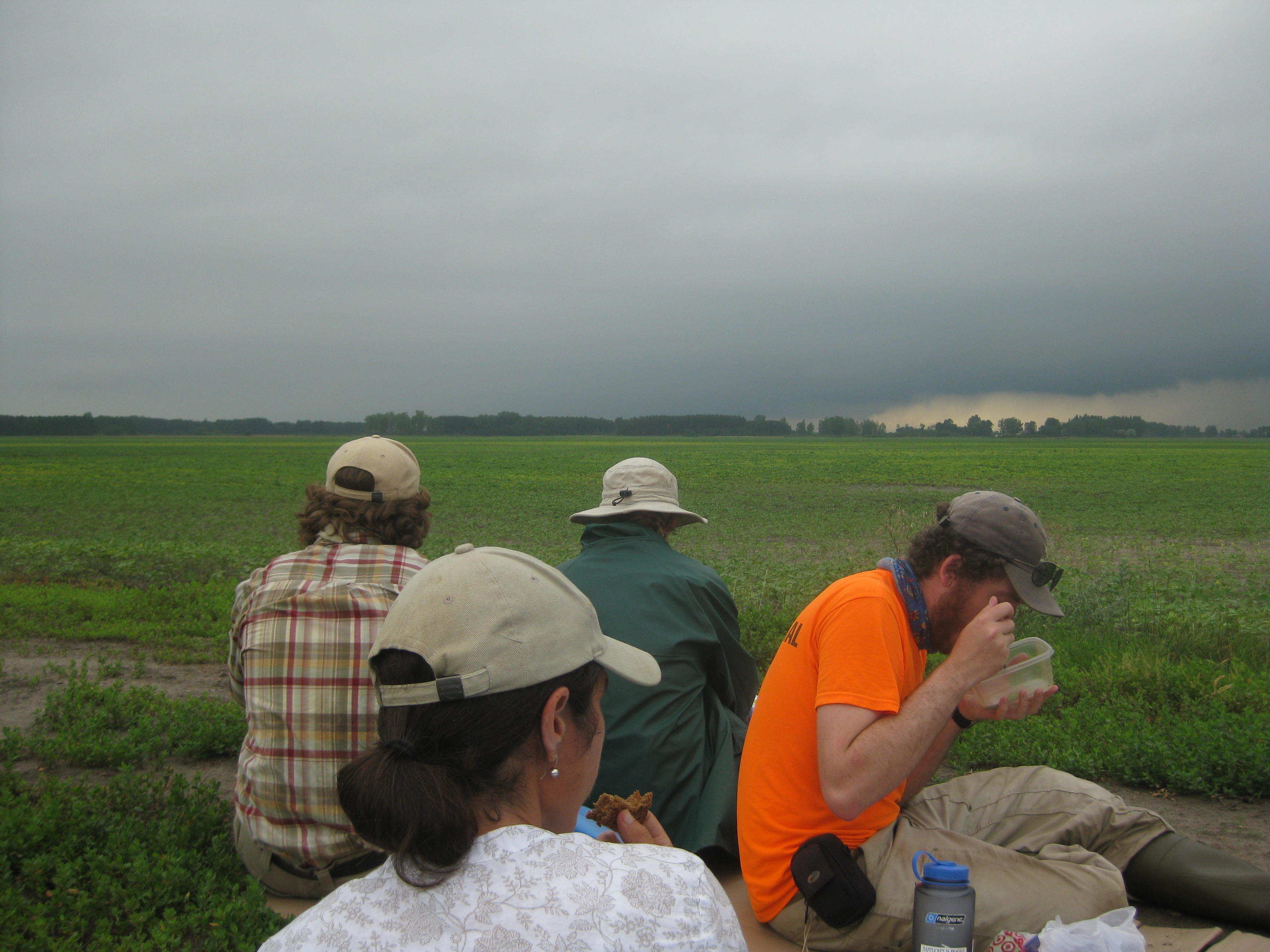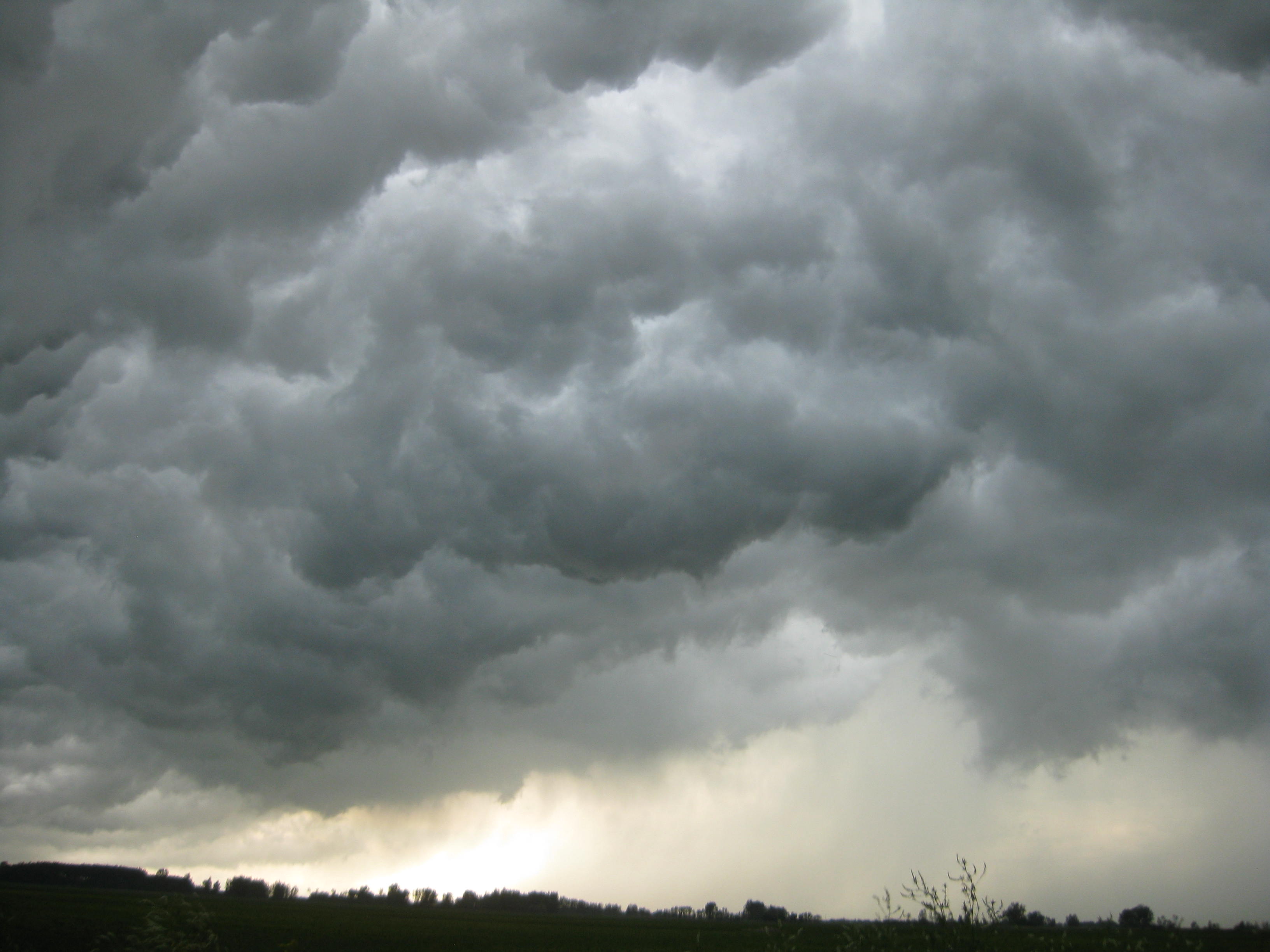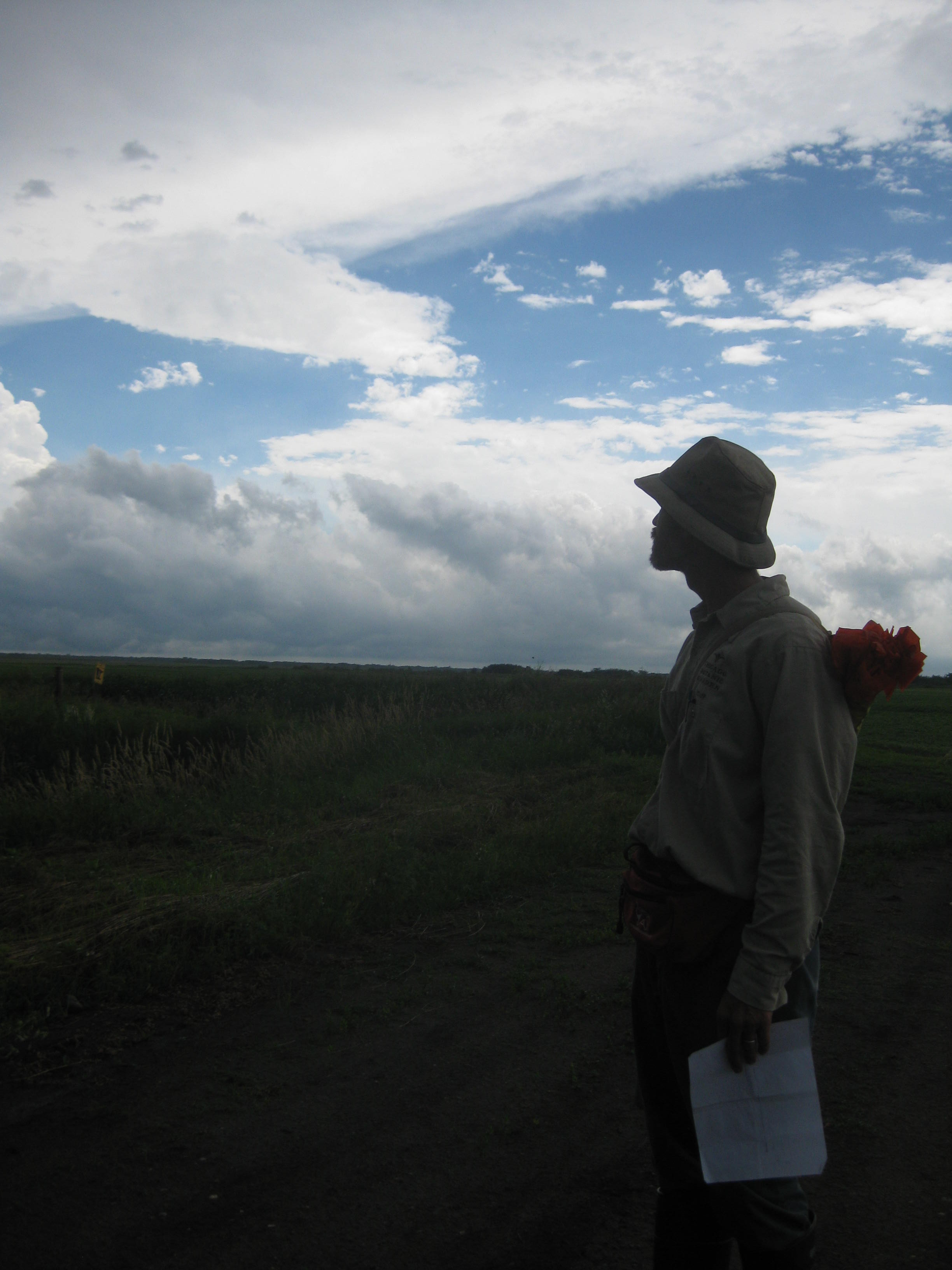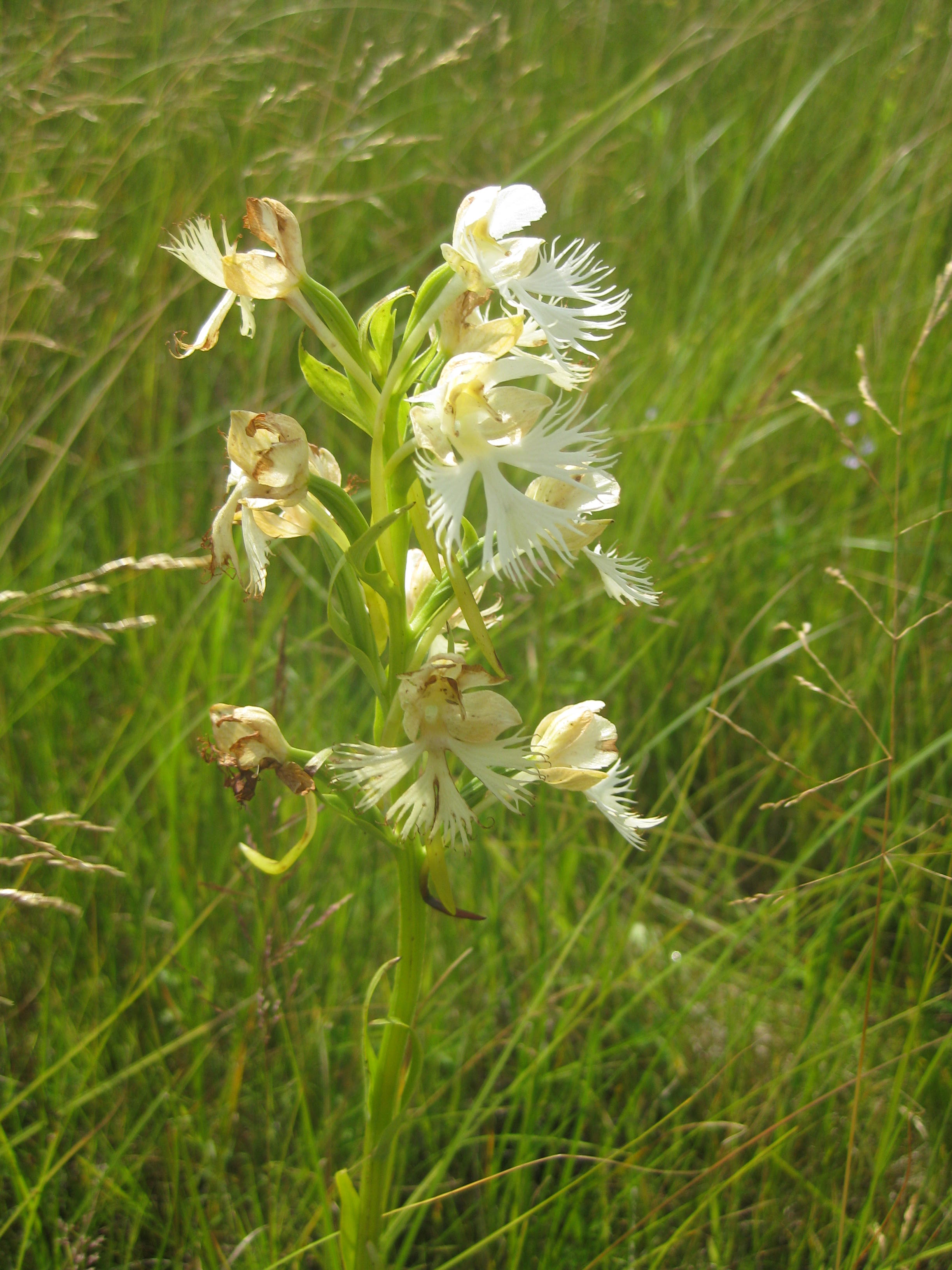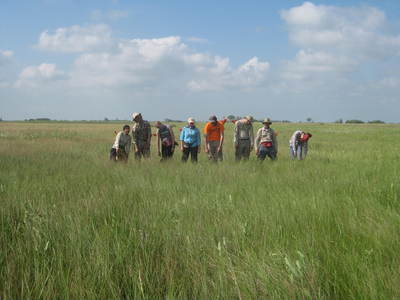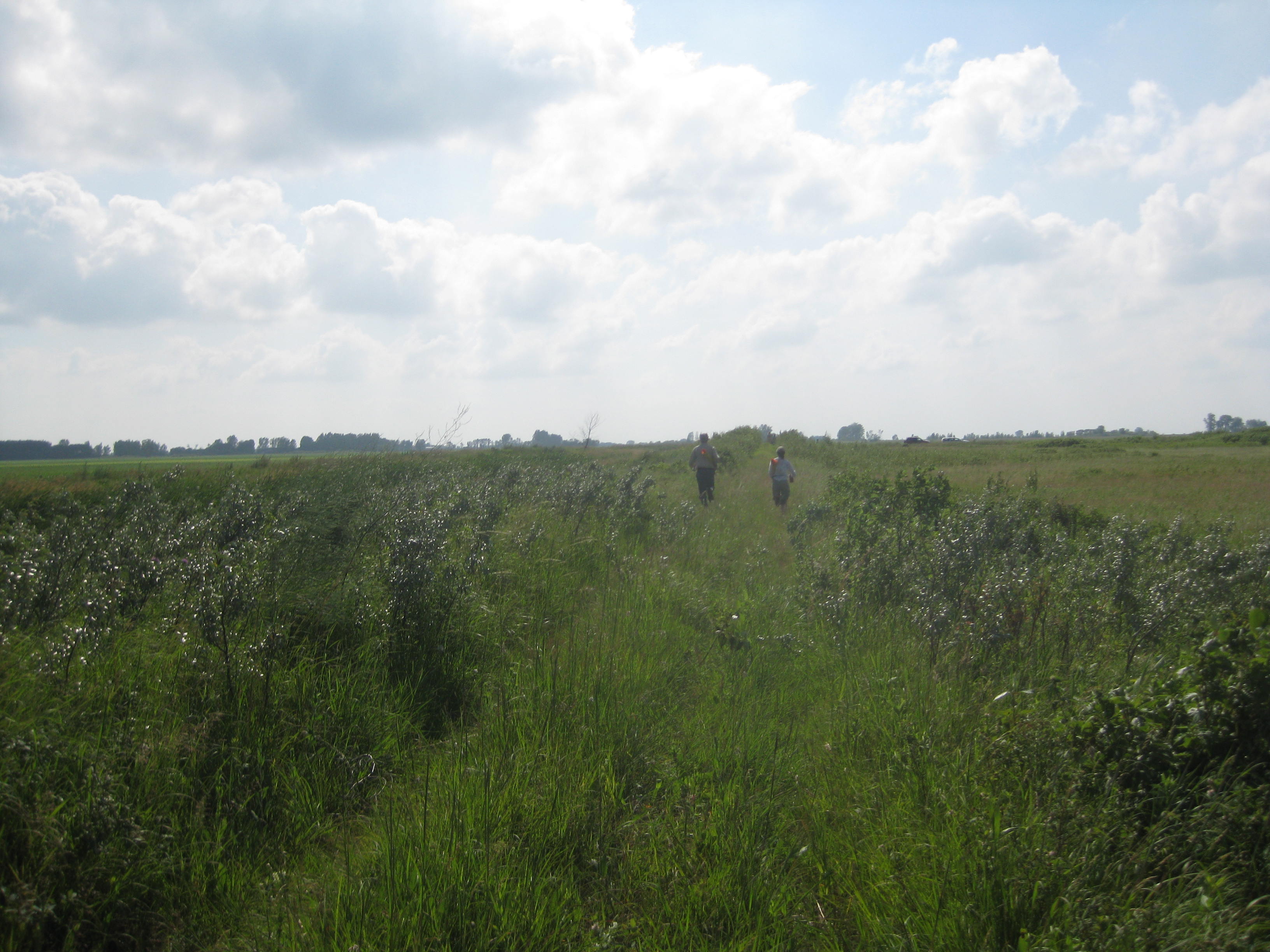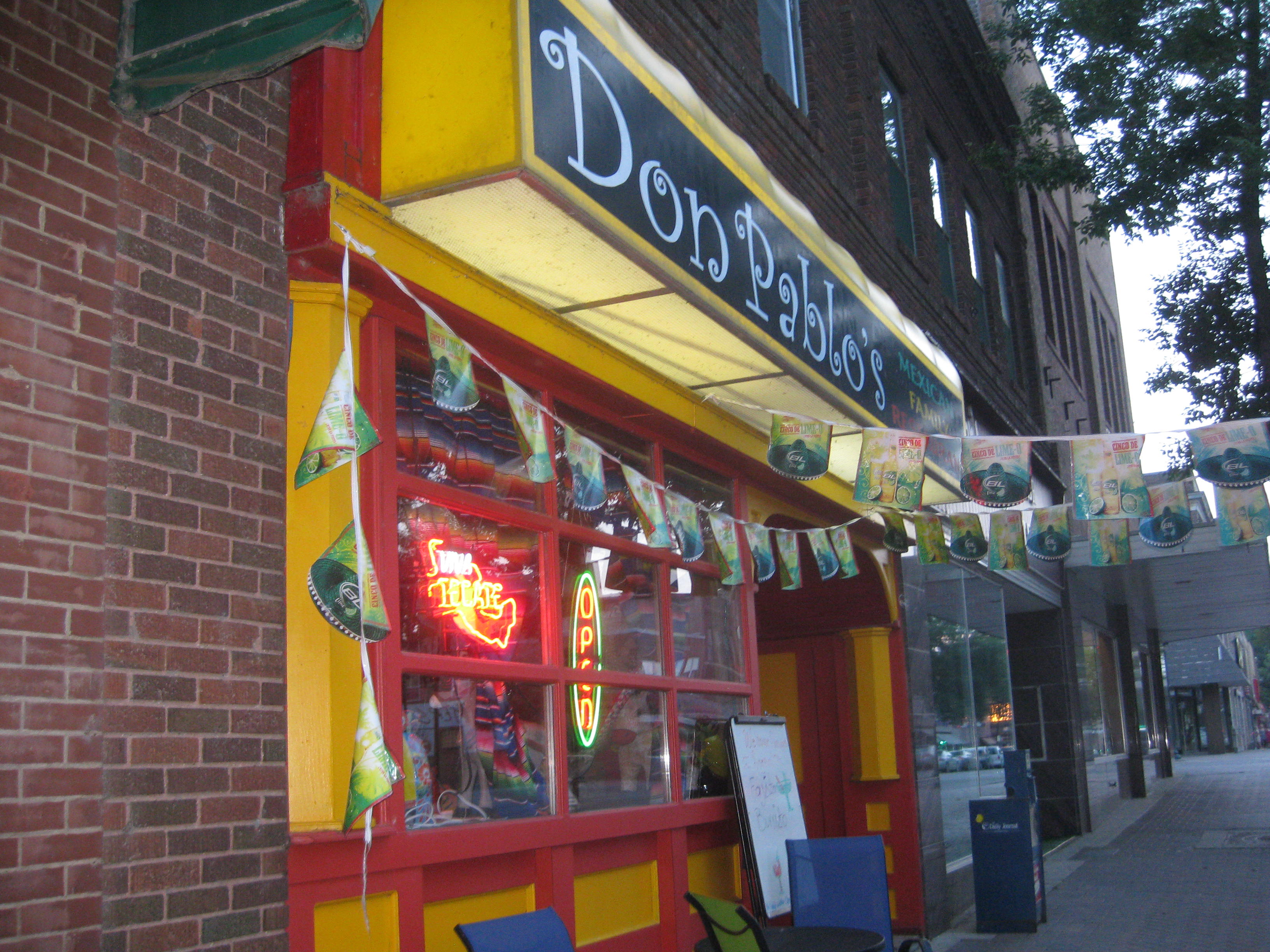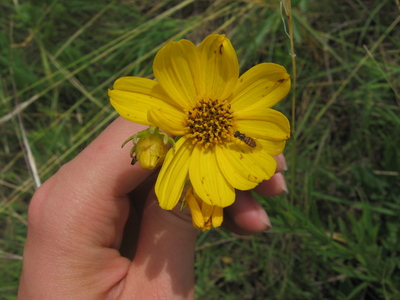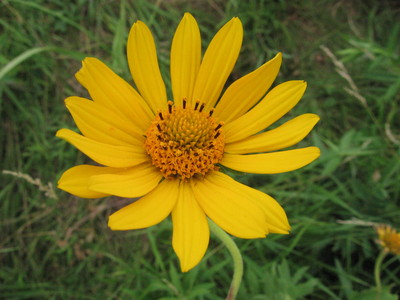5 Crew members hiked out to Krusemark’s to rescue Josh and Maria. The truck was stuck in a hole in a very soft 2-track. Order has been restored to the last field day for many of the crew. Josh, Maria, and Katherine will continue working for another few weeks and hopefully remember to stay to the LEFT!
|
||||
CategoriesExperiments
|
Gretel Kiefer | August 19th, 2011 | Category: stories from the field | Leave a comment We made an Echinacea Project float and participated in the annual Harvest Festival Parade in Hoffman, MN. It was great fun! This is how our float was announced… “Native prairies are very rare in Minnesota, but there are several prairie remnants in the Hoffman area. Every summer a team of scientists from around the country comes to study the biology, conservation, and restoration of prairie plants and insects. They are based in the Hoffman – Kensington area. If you see members of The Echinacea Project working on a hillside or in a ditch, ask them what they are doing!” Team Echinacea is busy in two states! The Minnesota crew is working in the field and the dedicated crew of volunteers at Chicago Botanic Garden in Illinois is working in the lab. This panoramic image of the lab, taken by Bob Mueller, shows volunteers counting Echinacea seeds and taking random samples for weighing. Click & drag the image to see all 360 degrees! During the last week of July, in addition to working on our independent projects, we spent lots of time measuring in the Common Garden. It’s kind-of like a yearly check-up for all the Echinacea plants there: we count their leaves and rosettes and heads, measure their stems and longest leaves, and check them for bugs or other damage. Lee Rodman | August 7th, 2011 | Category: stories from the field | Leave a comment Last week (well, 9 days ago), we headed north to the Crookston area to survey the Western Prairie Fringed Orchid (Platanthera praeclara). View image View image View image Josh Drizin | July 25th, 2011 | Category: Photos | Leave a comment After enjoying the pig races out at the Grant County Fair yesterday, it was back to field work for me today. I biked out to the Hegg Lake Restoration area to discover that my Echinacea pallida site had experienced something that is now common for many prairie remnants – mowing. Echinacea pallida tagged PAL 1014 before mowing: Echinacea pallida tagged PAL 1013 after mowing: Luckily I still have a decent number of crosses, and this just cuts the number I was planning on having a bit shorter. Tomorrow I will begin crosses to use up my remaining supply of Echinacea pallida pollen. Nicholas Goldsmith | July 24th, 2011 | Category: Echinacea hybrids--exPt 6, Photos, stories from the field | One comment We accomplished a lot, even thought the weather was super hot! We even started at 7 am to try to beat the heat. Monday, (July 18, 2011) was amazing in two different ways. The temperature was in the nineties, but the heat index was over 100 F. We worked in the morning, but by 10 am it was heating up. Because of the humidity, our clothes were soaked through by the end of the day. We measured plants in the common garden on Monday afternoon, and helped Katherine set up cages for her aphid experiments. Here’s a picture of what we felt like on Monday: (Notice the sweat on Josh’s brow as he measures the height, in centimeters, of the Echinacea head. Tuesday and Wednesday, we decided not to work outside during the afternoon, so we did morning field work, and then spent time updating the website and computer work during the afternoon. Here are a few photos of our projects. 1. Callin’s Compatibility Project: 2. Amber Z’s Phenology Project at Staffanson Prairie Preserve 3. Lee’s compatibility project with Coreopsis palmata and Heliopsis helianthoides 4. Katherine’s Experiment with aphids. She set up lots of cages to keep aphids in the right places. Very cool! 5. Josh is helping other groups and helping with the main projects, because he’s waiting for his Big Bluestem and Indian Grass to grow for his experiment (sorry, no photo). 6. Maria has been collecting Dichanthelium seeds for later experiments. Check out the cool purple flower of Dichanthelium in the picture. 7. Amber E. has been collecting pollen from Dalea in lots of different remnants (sorry, no picture). Dalea purpurea is a purple flowering legume.
8. Nicholas is just about to finish all his compatibility experiments between Echinacea angustifolia and Echinacea pallida. To do cross pollination experiments, he first paints the bracts that subtend the styles he will pollinate. Aqua is a easy color to recognize on the bracts. On Thursday and Friday, we were able to do more fieldwork in the common garden, even in the afternoon (common garden measurements and phenology). We also had time to practice taking some photos for the website. The photo below shows Stuart scouting a good location for a website photo. Yesterday we went on a trip to the Crookston area to help Gretel with her White Fringed Orchid search. Here are pictures for your viewing pleasure 🙂 The day started off hot, but not excessively hot….. Gretel and Stuart leading the pack. We worked in groups of three, with Gretel, Stuart, and Josh visoring in each group and the rest of us flagging and counting. After working from 9+am to around 12.30pm, it was lunch time! We proceeded to have lunch picnic style, but not for long – because a storm was headed our way! We quickly headed back to the cars for safety, and watched the awesome storm while eating lunch. Fortunately the storm passed over quickly, and soon the skies were clear again. Stuart contemplating the skies. We went back to work in another section of the prairie for the rest of the afternoon. Lee searching for orchids. ‘Where forth art thou, white orchid?’ And there you are! (usually right under my nose) Around 4+, we finally finished searching the plots…we were quite exhausted by then… but we were done…Victorious Team Echinacea! The amazing couple who still had the energy to race back to the cars.
After that we drove back to Douglas County. Stopped at Fertile, MN for ice cream but sadly they were closed on Saturdays. Also found out that Cafe 116, the dinner place in Fergus Falls we were going to, closes at 6pm on Saturdays. So we had a pretty sumptuous dinner at Don Pablos, a quirky Mexican restaurant in Fergus Falls 🙂 Reached Hjelm House around 9 or 10pm. That was a long but fun day! 😀 This past week a lot more Echinacea started flowering, which meant we had plenty to do. We located all the Echinacea plants in the Common Garden that will flower this year. There were so many! They seemed to be particularly abundant in the 99 garden. Lee Rodman | July 17th, 2011 | Category: stories from the field, Style Persistence 2011 | Leave a comment Hi everyone, Maria here again. Today was a particularly happening day in my opinion. Everyone had something to do. Amber E. is back from Alaska with Ruth! Karen arrived from Evanston in the afternoon! In the morning those of us who hadn’t finished our Stipa searches in the common garden finished that! (So Stipa is done! – we scaled back though and only searched for the 2011(?) cohort). After that Gretel, Ruth, Amber E and I put Position/Row signs in the common garden and made the signs face East/Westwards so now it’s so much easier to read the signs while you are walking in the common garden. Then we got started on looking at the phenology of Echinacea in the common garden. We systematically walked through each row, looking out for flowering Echinacea with emerged anthers and pollen, twist-tying the heads and recording them in our visors. Josh joined us when he finished his Stipa searches. We found quite a few flowering heads – bet there’ll be more soon. While we were looking for flowering Echinacea, we saw Stuart, Callin, Amber Z and Nicholas crowded around ‘Joe’ – the pet name given to the prominently flowering Echinacea at row 28, position 860. As described by Callin in the previous post, they were practicing bract-painting for their independent projects on Joe. When we finished looking at all the rows, it was time for lunch and short presentations of our projects. It was good to hear about everyone’s projects and talk about my own projects and get feedback. After lunch, we got started on our independent projects or worked on the New Media Initiative. Gretel and I headed to Hegg Lake to look for Dichanthelium (Panic Grass) seeds for my second project. This summer I will be collecting seeds from Dichanthelium plants from different remnants, including Hegg Lake and Loettler’s Corner (I might not have spelt that right – sorry). My plan is to collect seeds from 30 individuals from each “site”, as there are several places at Hegg Lake that seem to have a lot of Dichanthelium. After collecting the seeds, I will be bringing them back to Chicago Botanic Garden and do more work on them in the fall/later. Click here for the I am super super indebted/thankful/grateful for Gretel. Without her guidance, I’d probably be in a big mess/not knowing what to do/still be at Hegg Lake as this is my first time doing independent field work. When we reached the place at Hegg Lake (it was near the road, area with ditch, south of the parking lot), a lot fo the Dichanthelium seeds had already fallen off the culms. It was quite disheartening. We walked a little north and found a patch of Dichanthelium with most of their seeds intact, then we laid out the tape measure for 20m in a roughly north-south direction (I kept thinking it was 2m while Gretel patiently corrected me ^^;;). Initial plan was to do every plant within arm’s length from transect, or every other plant if population was dense. However, that was not quite possible given the circumstances. After Gretel and I collected seed from the first plant and did all the measurements, she continued measuring/collecting while I picked ~30 plants near the transect (more than my arm’s length) that had at least one culm with 8 or more seeds to collect from and flagged them with a blank flag. I started measuring/collecting after I finished flagging. Around 4pm, Lee called – reinforcements were coming! Ruth and Lee arrived with Karen and they helped us finished the rest of the plants (by that time Gretel had completed 17 plants (!!) and I was on my 6th plant). It turned out that we had 31 flags so 31 envelopes with data and samples! We also collected some “random” samples – ie seeds from various random plants away from transect. Finished around 5pm – thanks to Gretel, Lee, Ruth and Karen! Really excited to get the first 30 done! Take a look at the simple data entry for today’s collection for more technical details if you’re interested. I might also do the seed count for today’s samples just to see how many seeds we can get from 30 plants using the ‘8 or more’ rule. (I just need to be rreally careful not to lose any seed >.<) We left 11 flags (labelled with sample number) at the site that we will return to later to collect more seeds from. Now that I have more experience, I’ll definitely be more systematic+efficient about it. Lesson of the Day: Having an experienced person around and helpers is always always always helpful! =D Thanks again to Gretel and everyone who helped! Maria Wang | July 7th, 2011 | Tags: dichanthelium, p1, phenology | Category: Flowering phenology in experimental plots, stories from the field, Wang's Dichanthelium | Leave a comment |
Recent PostsArchives |
||
|
© 2024 The Echinacea Project - All Rights Reserved - Log in Powered by WordPress & Atahualpa |
||||


